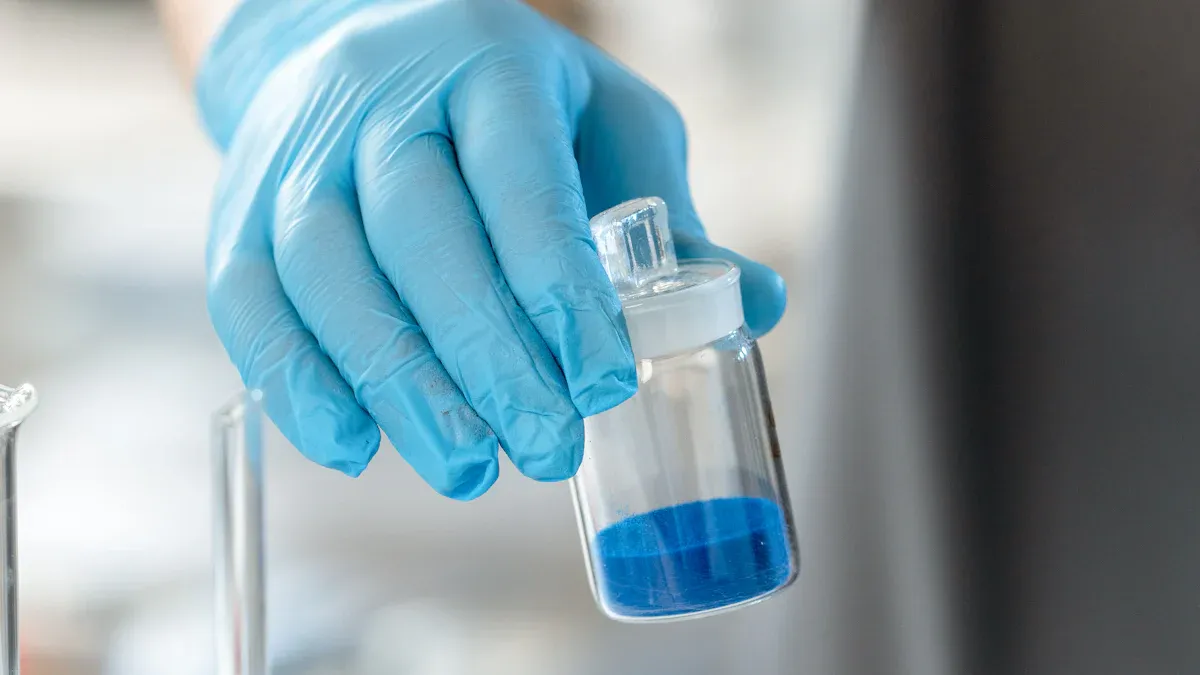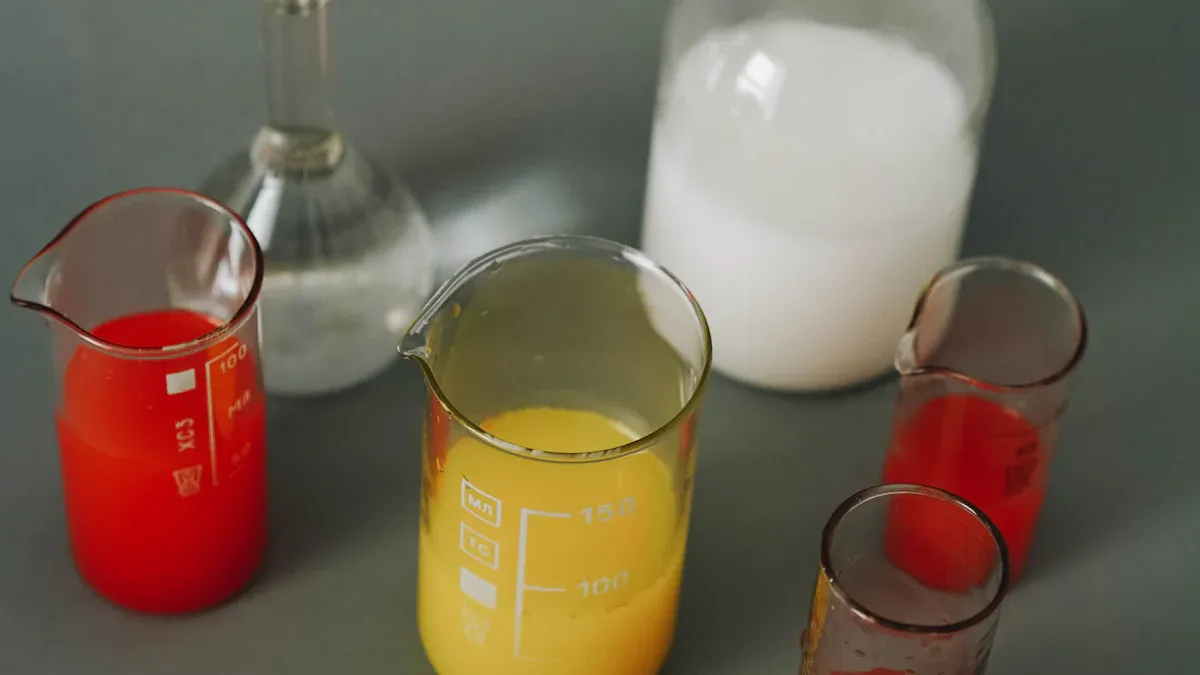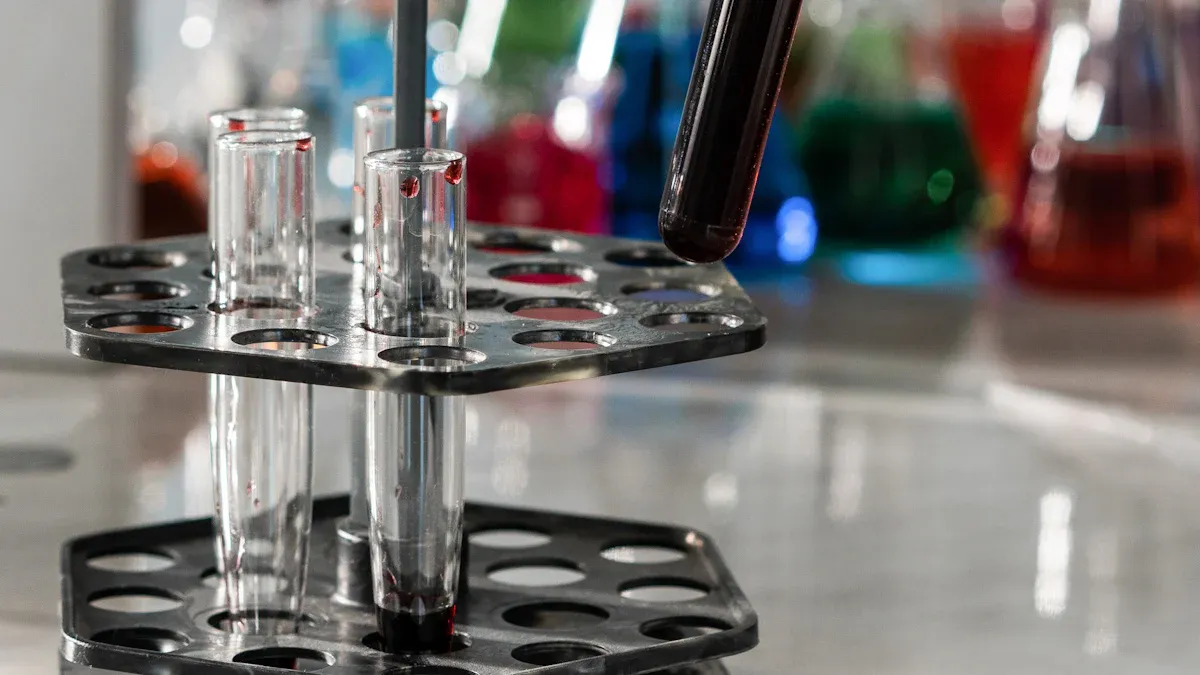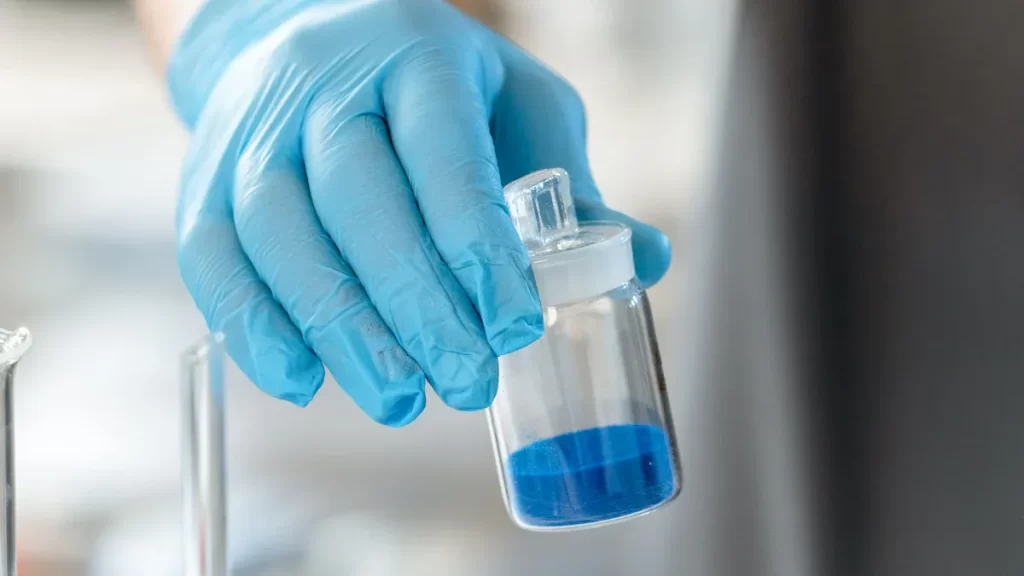News & Events
Best Practices for Using Titrants and Titrators in 2025

You achieve the highest accuracy in laboratory analysis by following strict best practices for titrant titrator use in 2025. Automation now drives consistency and reliability.
Automated titration eliminates manual errors and provides traceable results, saving you time and ensuring accuracy every day.
Titration supports industries from chemicals to pharmaceuticals. Proper preparation, calibration, and troubleshooting keep your results trustworthy.
| Region/Sector | Market Size (2024) | Projected Size (2030) | CAGR (%) |
|---|---|---|---|
| Global Market | US$3.1 Billion | US$4.2 Billion | 5.2 |
Key Takeaways
- Automate your titration process to reduce manual errors and improve accuracy. Automation saves time and enhances reliability in your results.
- Always standardize your titrant before use. This step ensures you know the exact concentration, which is crucial for accurate measurements.
- Follow strict sample preparation protocols. Clean equipment, measure accurately, and check for air bubbles to minimize errors in your titration.
- Regularly calibrate your titrator according to the manufacturer’s recommendations. Calibration ensures your measurements remain accurate and trustworthy.
- Stay updated with training and new technologies. Continuous learning helps you adapt to advancements in titration methods and maintain high standards.
Titrant Titrator Fundamentals
Principles of Titrimetry
You need to understand the principles behind titration to achieve reliable results. Titrimetry uses a chemical reaction between a titrant and an analyte to measure concentration. The titrant titrator process depends on several key steps:
- You must standardize the titrant to confirm its concentration.
- You prepare your sample by dissolving or treating it to release the analyte.
- You calculate results using sample size, titrant concentration, and the volume of titrant used at the endpoint.
These principles help you avoid mistakes and improve accuracy. When you follow the correct titrant titrator procedures, you can trust your measurements.
Types and Roles in Analysis
You will find different types of titrants and titrators in the lab. Each plays a special role in analysis:
- Titrants are solutions with a known concentration. You use them to react with unknown samples. A titrant must be stable, reactive, and easy to detect at the endpoint.
- Titrators are instruments that deliver the titrant and help you find the endpoint. Manual burette systems require careful handling. Automatic titrators reduce human error and make your results more consistent.
Tip: Choose the right titrant titrator for your analysis. Automatic titrators often give you better reproducibility.
A strong understanding of titrant titrator fundamentals helps you work with confidence. You improve accuracy and reliability in your results. You also master the principles and techniques that make titration successful. This knowledge lets you handle complex samples and ensures you follow best practices every time.
- You boost your proficiency in the lab.
- You avoid common errors in titrant titrator use.
- You support quality control in every analysis.
Titration Process
Sample Preparation
You start every titration by preparing your sample with care. Clean your equipment before you begin. Inspect the burette to make sure it works and is easy to read. Measure your analyte with precision in the Erlenmeyer flask. Use pure solutions and remove any air bubbles from the burette. Always use well-calibrated tools to avoid mistakes.
Standardization gives you the most accurate titrant concentration. This step is critical for reliable titration results.
Follow these steps for best results:
- Clean all titration equipment thoroughly.
- Measure your sample accurately.
- Prepare the titrant and check for air bubbles.
- Homogenize your sample for uniformity.
- Record initial and final readings to find the volume of titrant used.
You minimize errors when you avoid contamination and use leak-free apparatus. Always refer to samples as frozen if required for accuracy. Prepare solutions precisely and follow standard techniques. These steps help you achieve reliable titration outcomes.
Endpoint Detection
You need to detect the endpoint with precision to complete the titration process. Automation and advanced techniques now help you find the endpoint quickly and accurately. Potentiometric, conductivity, coulometric, and spectroscopy methods improve titration analysis. Machine vision can automatically identify the endpoint, reducing human error.
Machine learning can classify titration speeds and enhance endpoint detection accuracy.
Use these best practices for endpoint titration:
- Calibrate your electrode regularly.
- Clearly identify the endpoint using suitable methods.
- Use automation to improve accuracy and efficiency.
- Check for air bubbles to avoid false endpoint readings.
You ensure reliable titration results when you use modern endpoint detection methods. Automation and machine learning help you reduce mistakes and improve consistency. You can trust your titration data when you follow these steps.
Titrant Preparation

Selection and Accuracy
You must choose the right reagent for your titration to get accurate results. The selection process depends on several important factors. You need to know the exact concentration of your reagent. Standardization helps you confirm this value. Stability matters because some reagents can change over time. You also need to think about how you store each reagent. Some need protection from light or air.
Here is a table to help you remember the main criteria for selecting titrants:
| Criteria for Selecting Titrants | Description |
|---|---|
| Standardization | Knowing the exact concentration of the titrant is crucial for accurate results. Standardization ensures that the titrant’s concentration is known and consistent. |
| Stability | The stability of the titrant affects how often it should be standardized. Titrants can change concentration over time due to environmental factors. |
| Storage Requirements | Different titrants have specific storage needs to prevent degradation, such as light sensitivity or reactions with air. |
You should always check the accuracy of your reagent before starting any analysis. The accuracy of your reagent affects the reliability of your results. If you use a reagent with the wrong concentration, your calculations will be wrong. Standardization helps you avoid these errors.
| Evidence Point | Explanation |
|---|---|
| Titrant Accuracy | The accuracy of the titrant is crucial for reliable titration results. |
| Standardization | Standardization of the titrant ensures that its concentration is known precisely, impacting analyte concentration calculations. |
| Error Impact | Inaccuracies in titrant concentration can lead to significant errors in final results. |
Storage and Stability
You need to store each reagent correctly to keep it stable. Some reagents break down when exposed to light or air. Always use clean, labeled bottles. Keep reagents in a cool, dry place. If a reagent is sensitive to light, use amber bottles. For air-sensitive reagents, use airtight containers.
Tip: Check the expiration date on every reagent before use. Discard any reagent that looks cloudy or has changed color.
You should standardize your reagent often if it is not stable. This step helps you catch any changes in concentration. Good storage and regular checks keep your reagent ready for accurate titration.
Titrator Calibration

Calibration Steps
You need to calibrate your titrator to get accurate results every time. Titration theory tells you that calibration links your measurements to true values. You must follow each step to keep your titrator working well and to support titration theory in your lab. Use these steps to calibrate your titrator:
- Gather all materials. You need your auto titrator, calibration standards, distilled water, cleaning solution, pipettes, and reagents. Titration theory says that using clean and correct materials helps you measure concentration with confidence.
- Prepare for calibration. Inspect your auto titrator and check the calibration logs. Titration theory reminds you that regular checks prevent errors in concentration readings.
- Start the calibration procedure. Rinse all titrator parts. Prepare your calibration standard. Select the right calibration mode. Begin the calibration. Adjust settings as needed. Verify the calibration. Save your results. Each step supports titration theory and helps you measure concentration accurately.
- Finish with post-calibration steps. Clean the titrator. Run a test titration. Record all calibration and test results. Titration theory shows that careful records help you track concentration changes over time.
You should calibrate your titrator at the right times. Use this table to plan your calibration schedule:
| Calibration Frequency Recommendation | Description |
|---|---|
| Manufacturers’ recommendation | Follow the suggested schedule for your titrator. |
| Before a major project | Calibrate before you start important work. |
| After a major project | Calibrate after you finish big projects. |
| After an accident/event | Check accuracy if your titrator is bumped or dropped. |
| Per project requirements | Review project needs for special calibration. |
| Monthly, quarterly, or semi-annually | Use shorter intervals for frequent or critical titration theory work. |
| Annually | Use for mixed critical and non-critical titration theory tasks. |
| Biannually | Use for rare titration theory work with little risk. |
| Insurance requirements | Check if you need calibration certificates for insurance. |
Maintenance
You must keep your titrator in good shape to support titration theory and accurate concentration results. Good maintenance extends the life of your equipment and keeps your titration theory work reliable. Follow these routines:
- Wipe your titration system with a soft cloth or Kimwipes. Use water and gentle detergent if needed. Titration theory says that clean tools help you measure concentration better.
- Inspect for leaks in the dosing system. Watch for moisture buildup. Titration theory links leaks to errors in concentration.
- Check the titration tip. Remove any crystals or sediment. Titration theory shows that a clear tip gives you better concentration readings.
- Disassemble and rinse all dosing parts with distilled water. Titration theory supports using clean parts for every concentration test.
- Look for air bubbles in the dosing system. Check electrical connections for corrosion. Titration theory warns that bubbles and corrosion can change your concentration results.
- Inspect the burette as ISO 8655 Part 6 suggests. Titration theory values accuracy, so you must check your burette often.
Tip: Keep a maintenance log. Titration theory recommends tracking all work to spot trends in concentration changes.
You support titration theory and keep your results strong when you follow these steps. Regular care and calibration help you trust your concentration data and keep your lab running smoothly.
Titrant Titrator Operation
Setup and Methods
You need to set up your titration system with care to achieve reliable results. Start by selecting the right titration method for your sample. Each method requires specific sensors and equipment. For example, karl fischer titration uses specialized electrodes to measure water content accurately. You must match the sensor to the type of titration you plan to perform. The table below helps you choose the correct setup:
| Type of titration | Possible sensor to use | Remarks |
|---|---|---|
| Photometric titration | Optrode | No precipitate must be present |
| Redox titration | Pt ring electrode | |
| Complexometric titration | Copper (Cu) ISE | Almost all metal ions |
| Aqueous acid-base titration | Ecotrode plus | |
| Nonaqueous acid-base titration | Solvotrode easyClean |
You should always check your equipment before starting. Inspect the burette, electrodes, and reagent bottles. Clean all parts to avoid contamination. If you use manual titration, you must pay close attention to every step. Manual titration requires you to control the flow of titrant, watch for the endpoint, and record results by hand. This process can introduce errors if you rush or skip steps.
Automated titration systems simplify setup. These systems recognize electrodes and reagents automatically. You save time and reduce mistakes. For karl fischer titration, automated systems can handle reagent dosing and endpoint detection with high precision. You only need to load the sample and select the method. The system does the rest.
Tip: Always calibrate your sensors before each series of titrations. This step ensures your results stay accurate.
When you choose between manual titration and automated titration, consider your sample type, required accuracy, and available resources. Manual titration works well for simple analyses or when you need to train new technicians. Automated titration suits high-throughput labs and complex samples, such as those in karl fischer titration.
You can follow these steps for a successful titration setup:
- Select the titration method and sensor.
- Prepare and clean all equipment.
- Calibrate sensors and burettes.
- Set up the titrator or manual system.
- Run a test titration to check for errors.
- Record all settings and results.
You improve your workflow and reduce errors when you follow these best practices. Automated titration and manual titration both have important roles in the lab. You should choose the method that fits your needs and ensures the highest accuracy.
Automation and Software
You see major benefits when you use automated titration systems with advanced software. Automated titration reduces human error and increases efficiency. Modern titrators use intelligent sensors that recognize electrodes and reagents. This feature cuts setup time and helps you avoid mistakes. For karl fischer titration, automated systems deliver precise results and handle complex calculations for you.
Automated titration systems offer many features that improve your workflow:
- Automatic titration and data recording lower the risk of manual errors.
- Enhanced user interfaces, such as large color touch screens, make operation easier.
- Automated setup and operation streamline the titration process.
- Data storage lets you keep a history of all measurements.
- Integration with digital technologies increases flexibility and usability.
You can see the benefits of automation and software in the table below:
| Feature | Benefit |
|---|---|
| Fully integrated system | Enhances efficiency and accuracy in titration workflows. |
| Compliance with regulatory standards | Ensures adherence to regulations set by governing bodies like the FDA. |
| Detailed audit trails | Maintains a record of all changes, ensuring data integrity and security. |
| Central administration in OMNIS | Simplifies management of data and processes, reducing the need for multiple audit trails. |
| High standards of data security | Protects data integrity through encryption and secure data exchange. |
| Ergonomic workflow integration | Facilitates user-friendly processes, improving overall workflow efficiency. |
You also need to consider the cost of upgrading to automated titration systems. The initial purchase of high-quality instruments, such as those used for karl fischer titration, can be expensive. You must also budget for installation, calibration, maintenance, IT infrastructure, and regulatory compliance. However, you gain long-term savings through reduced waste, lower operational costs, and fewer technician visits.
| Cost Component | Description | Estimated Cost Range |
|---|---|---|
| Initial Purchase | High-quality instruments like analyzers and centrifuges represent significant upfront costs. | $500 – $100,000+ |
| Installation and Calibration | Requires specialized technicians for setup and initial calibration. | Varies based on equipment |
| Ongoing Maintenance and Repairs | Maintenance contracts typically cost 10% of the equipment’s purchase price annually. | 10% of purchase price annually |
| IT Infrastructure Costs | Software and licensing for data management and reporting. | 15% of upfront costs |
| Regulatory Compliance Costs | Allocating 5-10% of budget for compliance ensures legal operation. | 5-10% of budget |
You can evaluate the return on investment for automation by looking at time savings and reduced waste. Automation and AI can cut processing time from hours to minutes. Robots can lower operator hands-on time to about ten minutes and minimize consumable use. The iTrite digital burette, for example, increases accuracy and efficiency, reduces waste, and prevents costly errors. You save money on reagents and technician time. Precise digital dispensing also minimizes inaccuracies and spillage.
Note: Automated titration and karl fischer titration systems help you meet strict regulatory standards and maintain high data integrity.
You should always weigh the benefits of automated titration against the needs of your lab. Manual titration remains important for training and simple tasks. Automated titration provides speed, accuracy, and data security, especially for complex analyses like karl fischer titration. You can trust your results and improve your workflow when you use the right combination of manual and automated methods.
Applications in Analysis
Industry Uses
You see titration used in many industries because it gives you reliable results for different types of analysis. You can use this method to measure the concentration of an analyte in your sample. Each industry has its own main applications for titration and analysis. The table below shows how different sectors use this technique:
| Industry | Primary Applications |
|---|---|
| Food and Beverage | Moisture analysis to prevent microbial growth and ensure product safety. |
| Pharmaceutical | Measuring concentration of active pharmaceutical ingredients (APIs) and impurities for quality control. |
| Petrochemical | Optimizing production processes and ensuring product consistency. |
| Environmental | Monitoring water content in samples for pollution control and water quality assessments. |
You use titration in the food and beverage industry to check acidity and moisture. This helps you keep products safe and high quality. In pharmaceuticals, you rely on analysis to make sure each analyte meets strict standards. You also use titration in petrochemical plants to control processes and keep products consistent. Environmental labs use analysis to monitor pollutants and water quality. You must follow regulatory rules, such as those from the United States Pharmacopeia, to ensure your results are valid and safe.
Water Content and Trace Analysis
You often need to measure water content and trace amounts of analyte in your samples. Karl Fischer titration is a popular method for water content analysis. Recent improvements make this process faster and less labor-intensive. You can now use Near-Infrared (NIR) spectroscopy for real-time monitoring, which lowers your costs and gives you quick results.
For trace analysis, you want high sensitivity and accuracy. Titration techniques let you adjust the concentration of your titrant to match your analyte. This gives you direct and reliable results. You may also use other methods, such as anodic stripping voltammetry, but titration remains a top choice for many labs because it is easy to model and gives you high accuracy.
Tip: Automated titration systems help you meet strict data integrity standards and reduce human error in your analysis.
You see that industrial labs often use automated titration for better accuracy and repeatability. Academic labs may use manual titration to teach students about analysis and the behavior of different analytes. Both settings value the ability to measure small amounts with confidence.
Troubleshooting Titration
Common Pitfalls
You may face several challenges when you perform titration in the lab. One common problem is not transferring all the liquid during pipetting. Even a small drop left behind can change your results. Sometimes, you might use the wrong reagent or mix up bottles, which leads to errors in your methodology. Temperature also plays a big role. If you do not calibrate your glassware to the correct temperature, your measurements can be off.
Another issue comes from losing solution during the process. If you swirl the flask too hard, you might splash out some of the sample. Leaks in the burette can also cause you to lose titrant, making your results less reliable. In clinical settings, titration can become even more complex. You may see wide differences in how people follow titration schedules. This lack of standard methodology makes it hard to compare results or ensure safety. Patient adherence is another challenge. Many people find titration inconvenient, which can lead to missed doses or incorrect amounts.
Tip: Always double-check your setup and follow a clear methodology to avoid these common mistakes.
Solutions
You can solve most titration problems by following a careful methodology and using good lab habits. The table below shows some common pitfalls and how you can fix them:
| Common Pitfalls | Suggested Solutions |
|---|---|
| Not transferring all the volume | Use proper pipetting technique and check for drops left behind. |
| Using wrong reagents | Double-check reagent labels before starting your titration. |
| Titrating at wrong temperature | Calibrate your glassware and let solutions reach room temperature. |
| Losing solution | Swirl gently to keep all liquid in the flask. |
| Leaking burette | Inspect the burette for leaks before you begin your methodology. |
You should always keep detailed records of your methodology. This helps you spot patterns and fix problems quickly. If you work with patients or in clinical labs, try to use standardized titration schedules. This makes your results easier to compare and improves safety. Encourage everyone in your lab to follow the same steps each time. Consistency in your methodology leads to better titration outcomes.
You improve your laboratory results by following best practices for titrants and titrators. Focus on accuracy, use automation to reduce errors, and keep your skills sharp with ongoing training.
Automation boosts productivity and helps you meet strict standards. New technologies like AI-powered titration systems and portable devices make your work faster and more reliable.
| Training Program | Features |
|---|---|
| Titrator User Training | Maximizes performance, offers certification |
| Good Titration Practice™ | Ensures dependable titration |
Stay updated with courses such as the Titration – Advance Level Course. You keep your lab efficient and ready for the future by learning and adapting to new tools.
FAQ
What is the main principle behind titration?
You use the principle of reacting a known solution with an unknown sample. This analytical technique lets you measure concentration by observing changes at the endpoint titration or equivalence point titration.
How do you choose the right titration technique?
You select a technique based on your sample and the type of chemical analysis needed. Acid-base titrations work well for many solutions. Other techniques help with qualitative and quantitative analysis or quantitative determination.
Why is precision important in titration?
You need precision to get accurate results. Small errors can change your chemical analysis. Using the correct technique and following the principle of careful measurement helps you achieve reliable data.
What are common types of titration techniques?
You use a variety of titration techniques in the lab. Acid-base titrations, redox titrations, and complexometric titrations are popular. Each technique follows a specific principle and helps with different analytical technique needs.
How do you detect the endpoint in titration?
You watch for a color change or use sensors. Automated systems help you find the endpoint titration quickly. This step is key for quantitative determination and ensures your results match the principle of accuracy.

